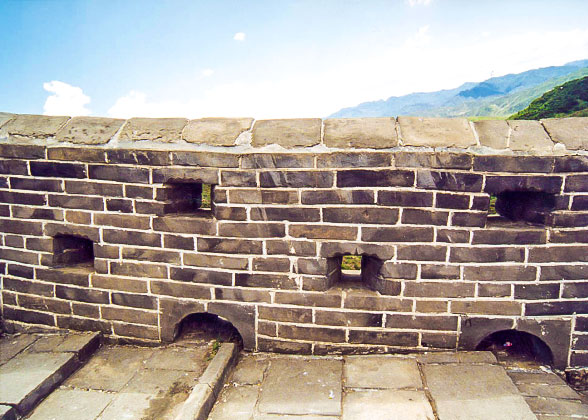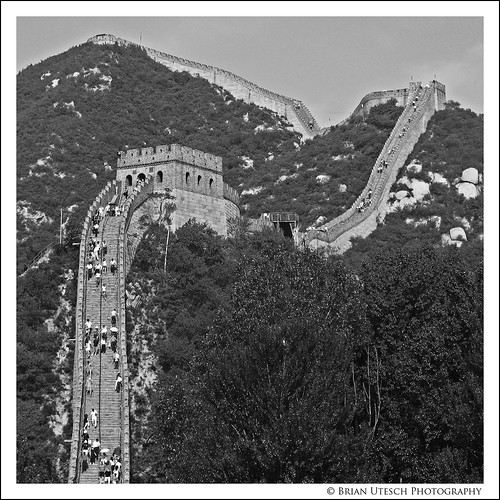 The winding Great Wall is not merely a wall but instead a complete and rigorous defense project composed of countless passes, watchtowers, garrison towns, beacon towers and blockhouses. These fortifications were arranged in certain ways under the control of the military command system at all levels. For example, there were about 1,000,000 soldiers guarding the Ming’s wall. The chief military officers were stationed in garrison-towns, while lesser officials and soldiers were stationed in Guan Cheng (the defensive beachhead) and other smaller fortifications. The eleven garrisons were set up along the wall in order to guard the precinct or subsection. The average height of the Ming wall measures 33 feet and the width is about five yards. In low, flat areas the wall was built high and more defense lines were added. In the lofty mountains, the wall was a little lower in order to save the human and financial cost. Sometimes, even steep cliffs served as natural walls to thwart enemies.
The winding Great Wall is not merely a wall but instead a complete and rigorous defense project composed of countless passes, watchtowers, garrison towns, beacon towers and blockhouses. These fortifications were arranged in certain ways under the control of the military command system at all levels. For example, there were about 1,000,000 soldiers guarding the Ming’s wall. The chief military officers were stationed in garrison-towns, while lesser officials and soldiers were stationed in Guan Cheng (the defensive beachhead) and other smaller fortifications. The eleven garrisons were set up along the wall in order to guard the precinct or subsection. The average height of the Ming wall measures 33 feet and the width is about five yards. In low, flat areas the wall was built high and more defense lines were added. In the lofty mountains, the wall was a little lower in order to save the human and financial cost. Sometimes, even steep cliffs served as natural walls to thwart enemies.Today, the wall has lost its military function, but as a great ancient engineering work, its magnificent beauty and austere structure are still worthy appreciating.
- Construction Material of the Great Wall
- Labor Force
- Varied Terrain and Peculiar Structure
- Design for the Fortifications
Construction of the Great Wall
the Great Wall


the Great Wall of China

History of the Great Wall


0 comments:
Post a Comment